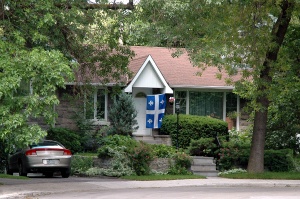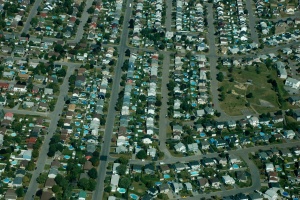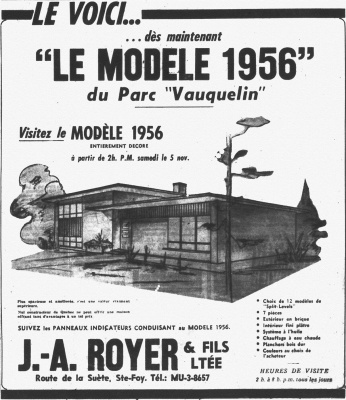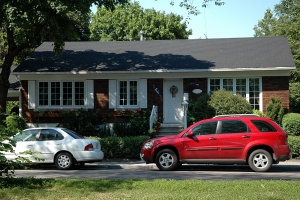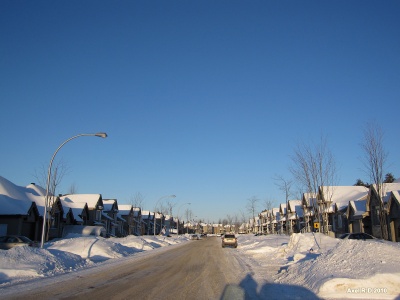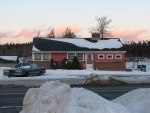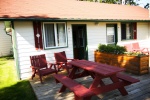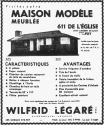The suburbs and the bungalow heritage in the making
par Fortin, Andrée
A wave of commemorations swept Quebec recently, as Quebec City celebrated its 400th anniversary in 2008 and Trois-Rivières and Gaspé respectively marked their 375th and 475th birthdays in 2009. Events like these are opportunities to celebrate our heritage and history. Yet even as we celebrate, a new heritage vision is emerging with a different focus: the suburbs and their typical dwelling, the bungalow.
Article disponible en français : Banlieue et bungalow : patrimoine en devenir
In 2007, Quebec’s minister of culture Christine St-Pierre tabled a green paper on heritage (Livre vert sur le patrimoine) that examined “new heritage elements”: intangible heritage and heritage landscapes, including urban landscapes. How does the green paper define heritage? There is no explicit formulation, but the following passage implicitly hints at a definition: “Whereas early legislation primarily sought to protect monuments with a strong commemorative component, the Cultural Property Act engaged the Quebec government in the gradual assembly of a collection of properties that bear eloquent witness to the history of an entire society and the way it settled the land, used its resources, created its own architectural and aesthetic language, produced tools, etc.” (p. 17, our translation)
None of the photos in the abundantly illustrated green paper show buildings less than one hundred years old. Yet the above definition does not link the heritage status of cultural properties to any particular age threshold. More recent constructions that bear witness to Quebec’s post-WWII history and illustrate aspects of its “architectural language” can also be qualified as heritage buildings. Heritage is not set in stone; it is enriched over time in two ways: first, of course, as museum collections of all kinds expand and increase in number, but especially as the notion of heritage is extended to new sites and artifacts, like industrial heritage, for example. How do yesterday’s “relics” become part of today’s heritage? By becoming “significant bearers of witness.” Significance is not something that is determined solely by historians and/or the passing of the years, but also by ordinary people who attribute value to these relics of the past. From individual memories, a new collective memory is constantly being constructed.
If we are to define heritage in Quebec as the green paper does, we must extend it to include the bungalow, not only for the sheer number of people who have adopted it as their dwelling of choice, but also for Quebec's unique variations on this American housing model.
Construction of Individual Memories
The majority of the population in Quebec’s larger urban centres has lived in the suburbs for two generations, since the early 1960s, and many since the 1950s (Fortin et al., 2002). Suburban living is anything but marginal, especially for families with children. In the Quebec City area, 90% of all children lived in the suburbs in 2006, up from 55% in 1966 (Morin and Fortin, 2008). Since the 1950s, bungalows have thus been home to a significant portion of the population, and are closely associated with their childhood memories. In other words, for the past 60 years, life in Quebec’s capital and in cities and towns across the province has meant life in suburbia, most often in a bungalow. For residents of the Quebec City and Montreal suburbs, this means that the historic city centre is neither “central” to their representations of the city, nor to their daily lives, because they have increasingly come to work, play, and shop on the urban periphery (Fortin and Desprès, 2008).
Original Aspects of the Model
Another justification for using the term “heritage” lies in the originality of the Quebec bungalow, which is quite distinct from its American counterpart. The Quebec bungalow takes its inspiration from the American ranch house and the British bungalow, but differs from both. The ranch house was the product of 19th century Spanish influences that were borrowed and popularized by California architects in the 1920s, then adapted by William J. Levitt for the construction of Levittown, the first “affordable” suburb in North America. In Quebec, the ranch model has been modified to incorporate a different floor plan. The family room typical of American homes has been done away with, and a basement has been added. Quebec bungalows also share certain stylistic elements with the British bungalow, which originated as a summer home for the British upper classes in the late 19th century. Both are characterized by a low sloping roof, the location of day use and sleeping areas at opposite ends of the house, and a hallway leading to the bedrooms. But the Quebec bungalow is smaller than the British version and has a basement. In short, Quebecois have “Quebecized” the bungalow and made it their own (Morisset and Noppen, 2004).
From Individual to Collective Memory
The suburbs hold an important place in the memories of many babyboomers, their children and even their grandchildren. For them, suburbia has become a place of significance, something more and more people are no longer afraid to acknowledge publicly. The suburbs are associated with an “art of living” (art de vivre), to borrow from the title of a book by Michel Lessard (2002), and suburbanites have developed a sense of attachment to their neighbourhoods, as witnessed by the debate over municipal mergers in the early 2000s. This new discourse on the suburbs as a place of belonging is conveyed in imagery, especially movie imagery, which situates them as places of memory.
In her documentary film L’Éloge du bungalow (2003), director Danielle Pigeon sets out to have a typical Quebec bungalow classified as a “historic monument”: for her, the Quebec bungalow is a piece of heritage. How does it fit the definition? Not only through its location and characteristics (age and representativeness), but also because of the experiences of those who once lived there and think back on their past with nostalgia.
This process of patrimonialization is reinforced in fiction as a new generation of filmmakers, inspired by novelists and screenwriters, tells stories of suburban childhood in the 1960s, 1970s and even the 1980s.
A number of Quebec films depict suburban life in the 1960s: Un été sans point ni coup sûr (Francis Leclerc, 2008), Maman est chez le coiffeur (Léa Pool, 2008), C’est pas moi, je le jure (Philippe Falardeau, 2008). CRAZY (Jean-Marc Vallée, 2005), the most decorated film in Quebec history, is set in 1970s suburbia, and 1981 (Ricardo Troggi, 2009) is set in, you guessed it, 1981. Some films feature suburban youth in the 2000s, for example À l’ouest de Pluton (Henry Bernadet and Myriam Verreault, 2008) and Tout est parfait (Yves-Christian Fournier, 2008). And numerous other films, from La Rage de l’ange (Dan Bigras, 2006) to Grandes chaleurs (Sophie Lorain, 2009), portray the suburbs as focal points of family life, even though their plots do not revolve around the suburban experience. All of these productions present images of past and present-day suburbia, helping secure its place as a valued and typical feature in Quebec’s collective memory.
Filmmakers, writers, essayists, and sociologists who grew up in the suburbs, and who in many cases are now in their fifties or older, are proposing new images of the olden days, images of the suburban variety. The bungalow, a product of the post-war boom, is well into its sixties. It has reached “retirement” age as new housing developments offer consumers new architectural models that are supplanting the bungalow style.
New images of the past are also making their way into the public realm, based on the experiences and recollections of the generations that have grown up in the suburbs since the 1950s. These images, drawn from individual memories, are in the process of constituting a new collective narrative and memory that is carving out a space for itself. Today, without doubt, the suburbs are well on their way to becoming part of Quebec’s heritage.
Andrée Fortin
Department of Sociology
Université Laval
Bibliography
Fortin, Andrée and Carole Després, “Le juste milieu : représentations de l’espace des résidants du périurbain de l’agglomération de Québec,” Cahiers de géographie du Québec, Volume 52, No. 146, 2008, pp. 153-174.
Fortin, Andrée, Carole Després and Geneviève Vachon, “La banlieue, patrimoine? Quelques éléments de réflexion,” Patrimoine, Vol. IV, No. 1, 2002, pp. 25-28.
Fortin, Andrée, Carole Després and Geneviève Vachon (eds), La banlieue revisitée, Québec, Nota Bene, 2002, 302 pages.
Lessard, Michel, Sainte-Foy : l’art de vivre en banlieue au Québec, Montréal, Les Éditions de l’Homme, 2002, 415 pages.
Ministère de la Culture, des Communications et de la Condition féminine, Un regard neuf sur le patrimoine culturel. Révision de la Loi sur les biens culturels, consultation document, Québec, Gouvernement du Québec, 2007, 74 pages.
Morin, Dominique and Andrée Fortin, “Comment la Vieille Capitale est-elle devenue vieillissante?,” Cahiers québécois de démographie, Vol. 37, No. 1, 2008, pp. 97-130.
Morisset, Lucie K. and Luc Noppen, “Le bungalow québécois, monument vernaculaire. La naissance d’un nouveau type. Première partie,” Cahiers de géographie du Québec, Vol. 48, No. 133, 2004, pp. 7-32.
Morisset, Lucie K. and Luc Noppen, “Le bungalow québécois, monument vernaculaire. La naissance d’un nouveau type. Deuxième partie,” Cahiers de géographie du Québec, Vol. 48, No. 134, 2004, pp. 127-154.

